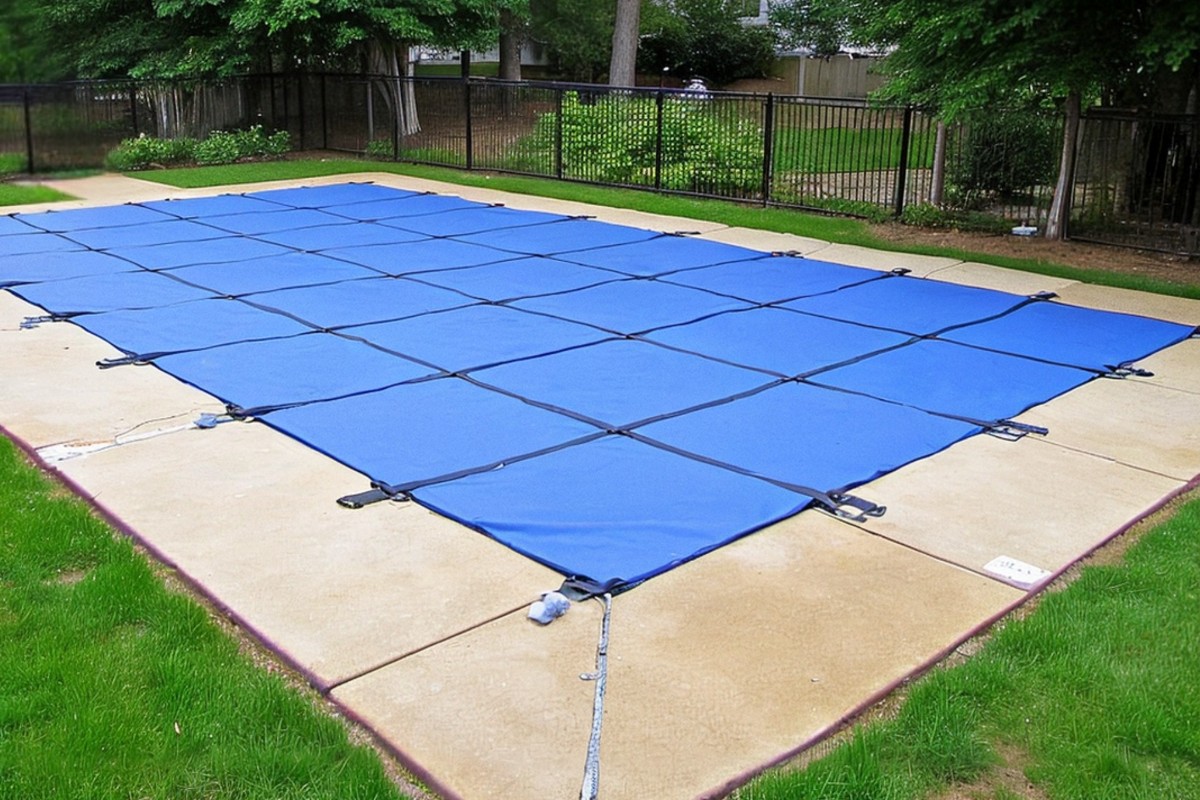As the temperatures rise and the days grow longer, pool owners across the country begin the process of opening their pools for the season. But before you dive into the excitement of warm weather and backyard fun, there's an important first step that often gets overlooked—removing your winter pool cover properly.
Failing to take the right precautions when uncovering your pool can lead to algae blooms, chemical imbalances, damage to your pool finish, and even costly repairs. Whether you’re in the Snow Belt, where harsh winters mean pools have been closed for months under heavy snow, or the Sun Belt, where pools may only have a short "off-season," proper cover removal is crucial.
Below, we’ll walk you through the hidden dangers of removing your pool cover and how to avoid common mistakes so that your pool is clean, clear, and ready for a smooth opening.

1. Unwanted Debris and Contaminants Can Enter the Pool
The Problem:
Leaves, dirt, twigs, and stagnant water collect on top of your pool cover over the winter. If you simply pull the cover off without clearing it first, all of that debris and bacteria-ridden water can spill directly into your pool, throwing off your water chemistry and forcing you to spend extra time and money on cleanup.
How to Avoid It:
- Use a pool cover pump to remove excess water before attempting to take off the cover.
- Use a soft bristle pool brush or leaf blower to clear leaves and dirt from the cover’s surface.
- Work slowly and carefully to prevent water and debris from sliding into the pool.
- If some debris does make its way into the water, use a skimmer net to remove large particles immediately before they sink.
Product Tip: If organic material like leaves and dirt enter your pool, a clarifier like Revive can help bind small particles together, making them easier to remove through filtration once the system is running.
2. Algae Blooms from Stagnant Cover Water
The Problem:
In addition to debris and general contaminants pouring into the water, you can also throw in algae and mold, which can create instant green water problems.
How to Avoid It:
- Like we mentioned before, pumping off all standing water is a must. Even small puddles can contain millions of algae spores.
- Once removed from the pool, winter covers should be cleaned thoroughly with a soft bristle pool brush and, if necessary, a cover cleaning chemical.
- Once the cover is removed and the circulation system is operational, immediately shock the pool and circulate the water to help prevent algae growth.
Product Tip: If you experience algae issues upon opening, consider using E-Z POOL in combination with a chlorine pool shock to eliminate organic contaminants and algae growth.
3. Water Level and Chemical Imbalances
The Problem:
During the off-season, your pool water naturally evaporates or is displaced by rain or snowmelt. Removing the cover can sometimes expose low water levels, affecting the pool’s filtration system when restarted. Additionally, stagnant water under the cover may have developed imbalanced pH, alkalinity, or calcium hardness levels, making it unsafe for swimming.
How to Avoid It:
- Check your water level immediately after removing the cover and add water if needed before turning on the pump.
- Apply Revive to protect your pool from the metals, phosphates and organic debris commonly found in source water.
- Test your water chemistry right away using a reliable test kit. Pay close attention to pH, alkalinity, and chlorine levels.
- If your chemistry is off, make gradual adjustments rather than dumping excessive chemicals into the water at once.
4. Pool Cover Damage That Can Lead to Future Issues
The Problem:
Winter pool covers endure months of exposure to extreme weather—freezing temperatures, heavy snow, ice, rain, and UV exposure. Small tears or weak spots may turn into full-blown rips when you pull the cover off, potentially dumping dirty water and debris into the pool or rendering the cover useless for next year.
How to Avoid It:
- Inspect your cover before removing it for any signs of wear or damage.
- If possible, have a second person help lift the cover evenly to avoid stretching or tearing weak spots.
- Once removed, clean, dry, and properly store the cover in a cool, dry place to extend its lifespan.
5. Filter and Equipment Overload
The Problem:
Once the cover is off, many pool owners immediately turn on their filtration system, not realizing that cold water, debris, or improperly primed pumps can cause strain or even damage. Overloading your filter with dirt and algae can also clog it quickly, making pool cleanup more difficult.
How to Avoid It:
- Clean out the skimmer and pump baskets before running the system.
- Manually skim and vacuum the pool before relying on the filter.
- If using a DE or sand filter, backwash it first before normal operation.
- If your system has been off for months, inspect the pump, hoses, and connections for any cracks or leaks.
Product Tip: If your filter is overwhelmed, a pool enzyme treatment can help break down oils, pollen, and organic waste before it reaches the filtration system, improving water clarity without overworking your pump.
Final Thoughts: Take It Slow for a Successful Pool Opening
Removing your winter pool cover isn’t just about pulling it off and jumping in—it’s a critical step that sets the stage for a trouble-free season. Whether you're dealing with harsh winter leftovers in the Snow Belt or mild seasonal transitions in the Sun Belt, following these careful removal steps can help you avoid algae blooms, chemical imbalances, and unnecessary equipment strain.
By taking the time to pump off excess water, remove debris, inspect your pool cover, and balance your water chemistry, you’ll ensure a smooth and stress-free pool opening.
Next Steps:
- Test your water 24 hours after circulating the pool after removing the cover and starting the system again for the season.
- Shock the pool as needed after the cover is removed and the system is operational.
- Use pool enzymes, algaecides, or clarifiers as needed.
- Properly clean and store your pool cover for next year.
With the right precautions, you’ll be swimming in no time—without the headaches that come from rushing the process!
